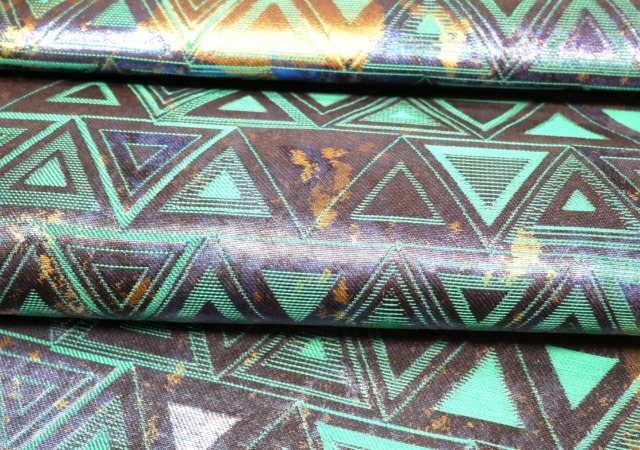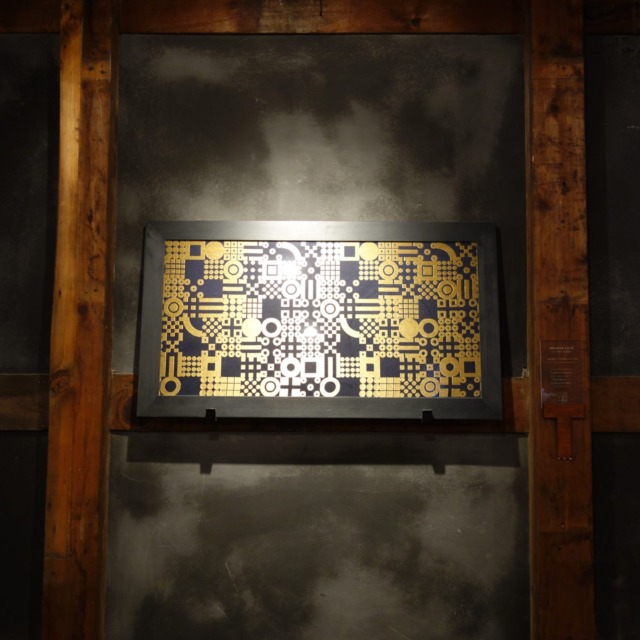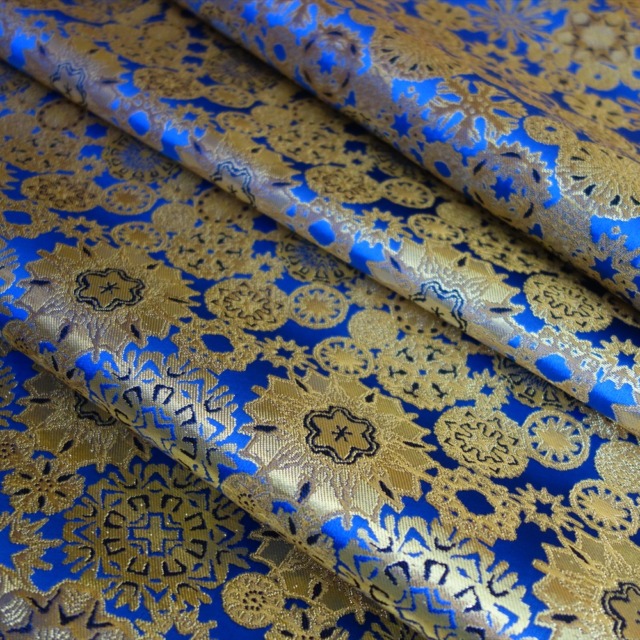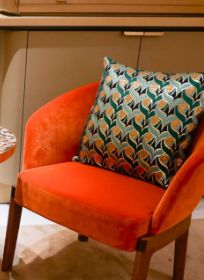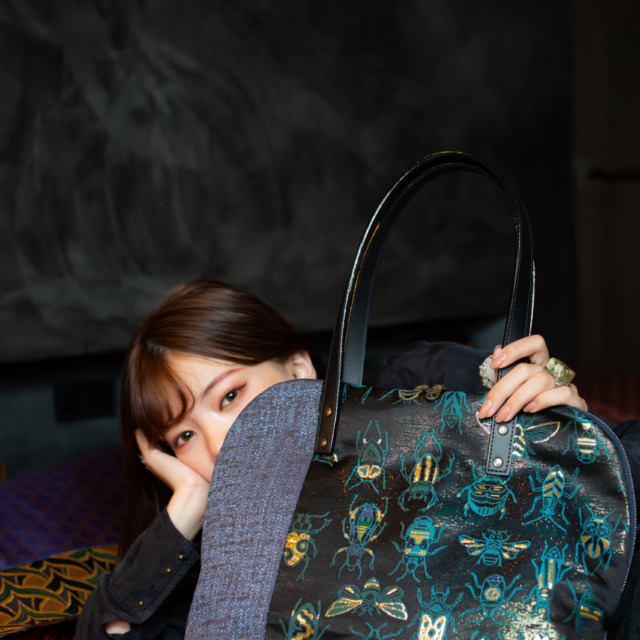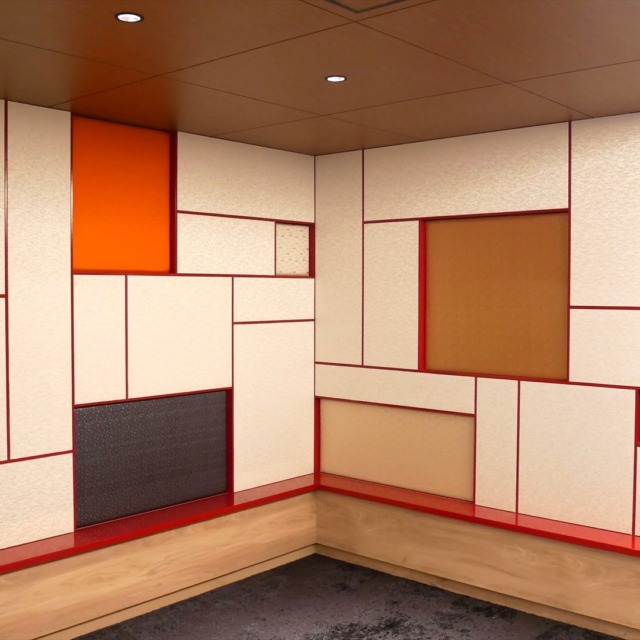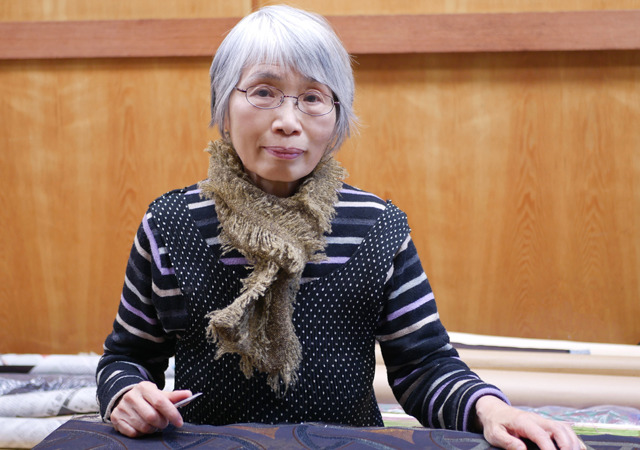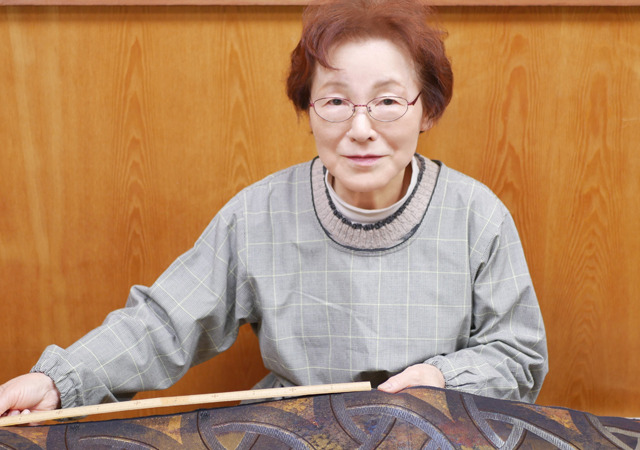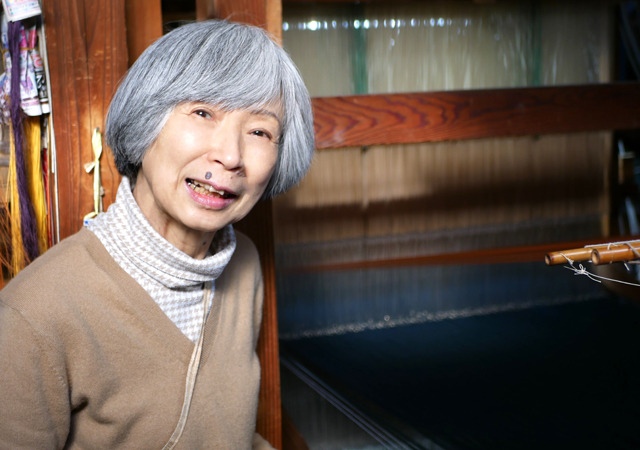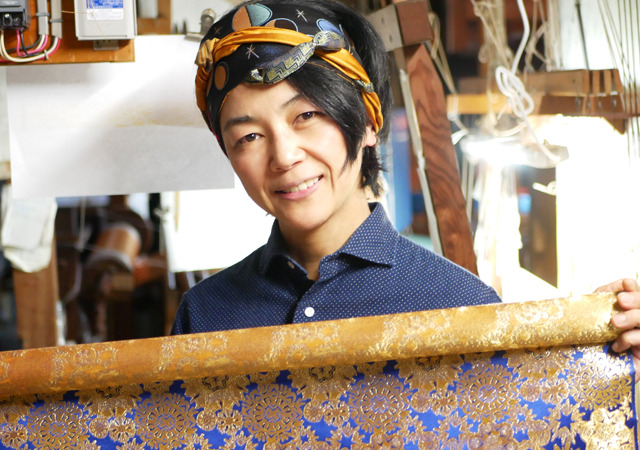

Traditional Nishijin technique: Hikibaku|Attraction|Nishijin Okamoto ‘B’
We at Okamoto Nishijin have been weaving gorgeous Nishijin brocade using a technique known as “honkin hikibaku” since the company was founded. Starting with this issue, we will write about the “A B C” of hikibaku in three parts.
This time it is “B”.
Traditional Nishijin technique: Hikibaku | Attraction
Characteristics of Nishijin textiles
Nishijin textiles are one of Japan’s world-class traditional crafts. Its most distinctive feature is ‘yarn-dyed textiles’, in which the threads are dyed first and woven in different colours to produce a depth of colour and texture when woven.
Gold-leaf-Hikibaku
Honkinbaku is a traditional technique in which Japanese paper is coated with lacquer, gold, silver and platinum, cut into thin strips and woven. Honkinbaku is a traditional technique in which Japanese paper is coated with lacquer and covered with gold leaf, cut into thin strips and woven. Silver or platinum foil may also be used. This technique involves applying layers of lacquer, polishing and applying gold leaf to create two types of foil threads: shiny ‘light foil’ and ‘rusty foil’, which has a dull glow and retains the texture of the paper by applying a thin layer of lacquer. Technological advances have made it possible to mass-produce these foil threads in the modern era, but honkin-yarn has continued to fascinate people with its beauty from ancient times to the present day, especially when the light reflects in dark places such as shrines and temples. This technique occupies a special place in traditional Japanese crafts.
How the “Hikibaku thread and real gold yarn” used in Nishijin brocade is produced ©@Kyoto Gold and Silver Thread Industry Cooperative Association.
The beauty of the gold is described in Junichiro Tanizaki’s ‘In-ei Raisan’.
Golden light in the darkness
Have you ever gone to the back room of a large building and seen a golden sliding door or a golden folding screen in the darkness, where the light from outside no longer reaches, catching the tip of the light from a garden far, far away, and shining back at you as if in a dream? I don’t think there is any other time when gold shows such a somber beauty. And as I pass by it, I often look back and see that as I move from the front to the side, the surface of the gold-ground paper slowly and significantly glows at the bottom. It never flickers, never blinks, but glints and glows after a long pause, like a giant changing colour. Sometimes, when I turn to the side, I discover that the pear-shaped gold, which until now had a sleepy, dull reflection, is glowing like a flame, and I wonder how it was possible to collect so many rays of light in such a dark place. It makes me wonder how it was possible to collect so many rays of light in such a dark place. People today live in brightly lit houses and do not know the beauty of gold. However, people in the past who lived in dark houses were not only fascinated by the beautiful colours, but also probably knew of their practical value. This is because, indoors where light was scarce, they must have served as reflectors. In other words, they did not use golden foil or sandpaper for extravagant purposes, but made use of their reflection to supplement the light. If this is the case, then we can understand why gold, which illuminated the darkness of a room without losing its lustre for a long time, would have been unusually precious, while silver and other metals would soon lose their lustre. I have already mentioned that maki-e is made to be seen in a dark place, but when you look at it this way, you realise that it is not only maki-e that is used in maki-e, but also in textiles, for the same reason that gold and silver threads are used in abundance in ancient textiles. The gold-ribbed kesa worn by Buddhist monks is the best example of this. Most temples in town today have their main halls brightly lit for the masses, so in such places they are usually quite gaudy, and it is rare to see a high priest of any character wearing one, but when you attend a Buddhist service in the traditional style at a temple with a long history, the sight of the wrinkled skin of the old priest, the flickering lights in front of the Buddha and the sound of the lanterns in front of the temple are all very different. As in the case of maki-e, the darkness hides most of the fancy woven patterns, and only the gold and silver threads sometimes shine a little at a time.
Junichiro Tanizaki, In-ei Raisan Translation: DeepL
Quiet radiance
Nishijin brocade has a quiet radiance. It is not just a piece of cloth, but a story interwoven with time and history. The gold and silver foil threads woven on handlooms and power looms catch the light and reflect it gracefully, evoking a quiet emotion in the viewer’s heart.
There is something special about this fabric that goes beyond the technical aspects. It is the result of the careful craftsmanship of each piece, the delicate workmanship of which creates a value that goes beyond the mere combination of thread and foil.
Texture and gloss
Nishijin brocade quietly enriches the surrounding space with its unique texture and lustre. This is the result of a fusion of techniques inherited from the past and modern technological innovations. The discreet yet deep light emitted by this fabric symbolises the beauty of Japanese tradition.
Japanese culture and technology
It is not just an ornament, but an expression of timeless beauty, the culmination of Japanese culture and technology. The fabrics produced by the Hikifoil technique convey a quiet but powerful message through their very existence. We weave Nishijin textiles on a daily basis, believing that they will give the viewer a deep impression that cannot be expressed in words.
*Ordinary products, such as those listed in our online store, use silver-based gold threads instead of hikibaku.
Hikibaku ”A”
Hikibaku ”B”
Hikibaku ”C”
-
Traditional Nishijin technique: Hikibaku|Techniques|Nishijin Okamoto 'A'
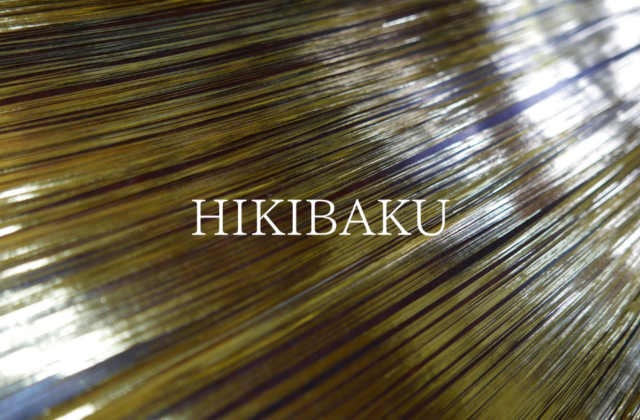
-
Traditional Nishijin technique: Hikibaku|Future|Nishijin Okamoto ‘C’
